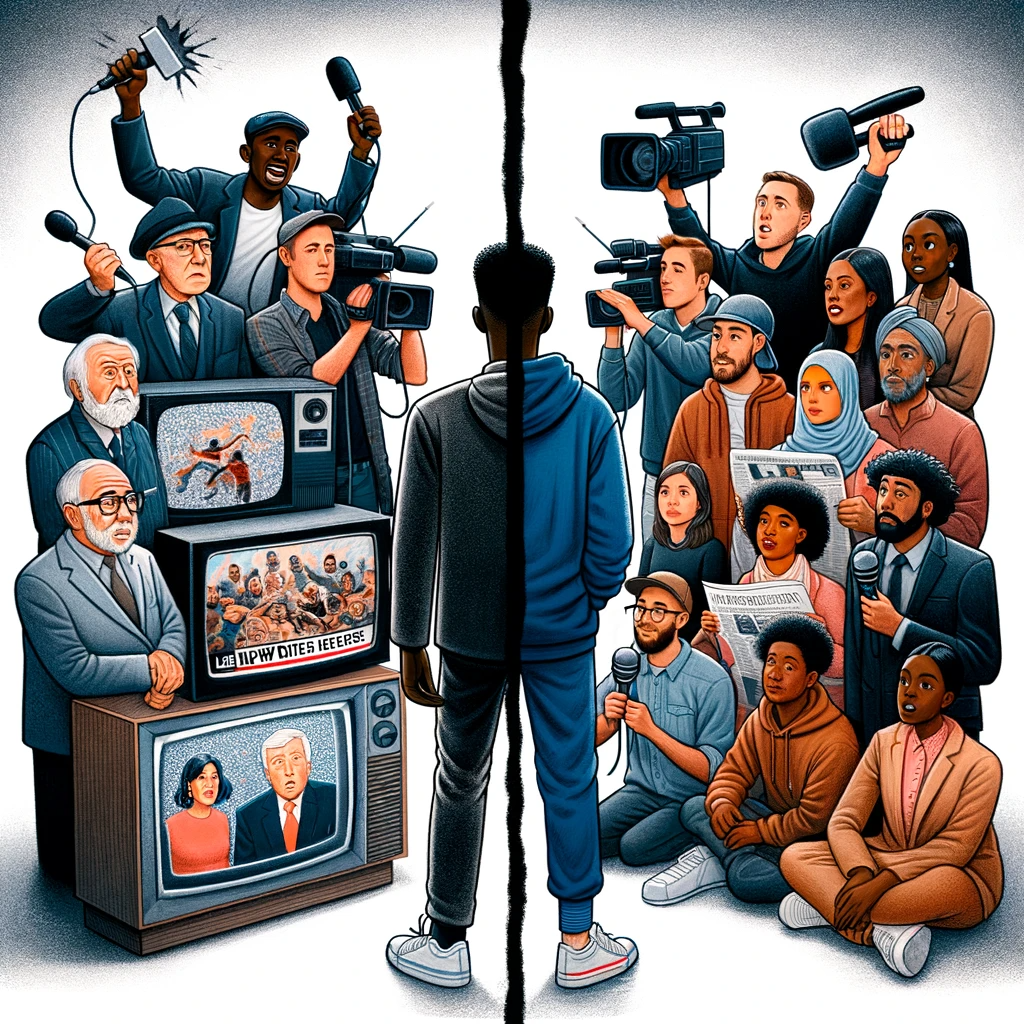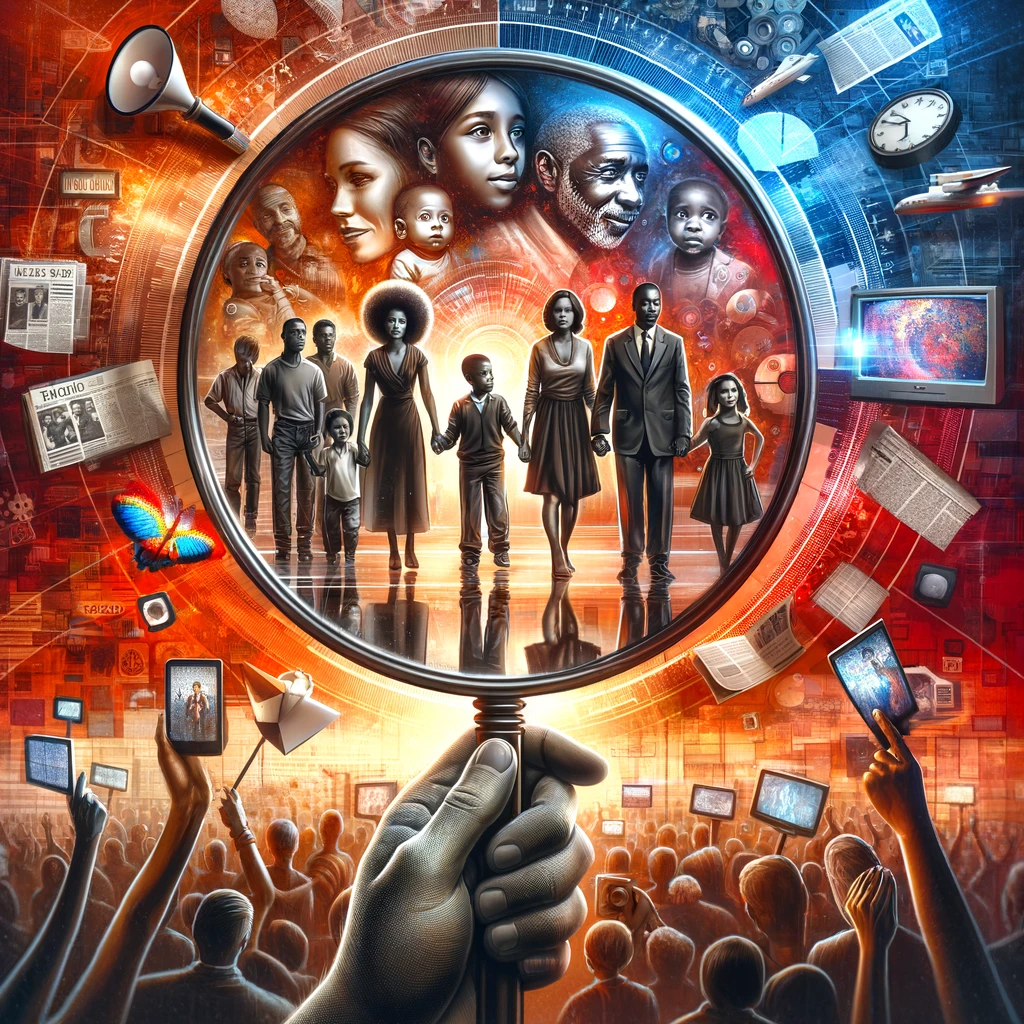The media is an omnipresent and influential entity, acting as a mirror to society’s realities, magnifying its issues, and providing a platform for voices. Its ability to shape public opinion and societal norms is profound, making it essential to examine its portrayal of celebrities, minorities, and marginalized communities, and the implications of biases and misrepresentations.
My personal experience as a Black child in America provided a unique dual perspective, an insider/outsider view that highlighted the stark disparities between media narratives and my actual experiences. Growing up in a military family and spending summers in my neighborhood, I was acutely aware of the mismatch between the genuine, kind-hearted people I knew and the negative portrayal we received in the media. This discrepancy was striking and has continued to resonate with me.
During the height of the crack cocaine epidemic, the media frequently portrayed our communities as chaotic, criminal, and nearly animalistic. Yet, within these communities, there existed stories of humanity and resilience that were often ignored. For example, my grandmother, amidst the chaos, would send me to the gas station with a note pinned to my shirt for cigarettes – a small but telling testament to the enduring sense of community and trust. Unfortunately, these nuanced dimensions rarely made it to the forefront of media coverage.
The media of that era often portrayed us more as destructive elements rather than as victims of a devastating drug crisis. The propagated images were of violence and lawlessness, overshadowing the systemic issues that brought drugs into our neighborhoods, the economic struggles we faced, or the societal neglect that allowed the crisis to grow. This portrayal has created a harmful, enduring stereotype of Black communities and has significantly influenced public opinion and policy.

The media’s role in perpetuating stereotypes and biases extends beyond the portrayal of communities in crises. It affects everyday narratives and representation, from the typecasting of minorities in movies and TV shows to sensational reporting of news involving people of color. This consistent negative portrayal deeply impacts how these communities are perceived and treated.
Consider the portrayal of celebrities. Celebrities of color often face heightened scrutiny and are held to different standards compared to their white counterparts. Scandals involving celebrities of color tend to receive disproportionate media attention, perpetuating a narrative of inherent moral or behavioral deficiencies. This differential treatment reinforces racial stereotypes and perpetuates bias.
Despite these challenges, the media holds the power to enact positive change. An increasing number of journalists, filmmakers, and artists from marginalized communities are striving to challenge and change these harmful narratives. They are sharing authentic stories and experiences, showcasing the diversity, richness, and resilience that exist within these communities. This effort represents a promising shift toward more fair and nuanced representation.
However, much work remains to be done. The media must take responsibility for its influence and strive for accurate, fair, and comprehensive representation of all communities. This includes amplifying the voices and experiences of minorities and marginalized groups, challenging stereotypes, and advocating for social justice. It also involves a commitment to introspection and continual learning, acknowledging past failings, and making concerted efforts to rectify them.
As consumers of media, it’s crucial that we remain critical and discerning, questioning the narratives we consume. We must seek out diverse sources of information, engage with perspectives different from our own, and challenge the biases that influence our understanding of the world.
The media’s portrayal of communities, especially marginalized ones, significantly influences societal perceptions and attitudes. Recognizing and challenging this influence, and pushing for better representation, is a crucial step towards a more equitable society. Let’s strive to reshape the narrative, giving it the depth and breadth that truly reflects the complexity and humanity of all communities.






